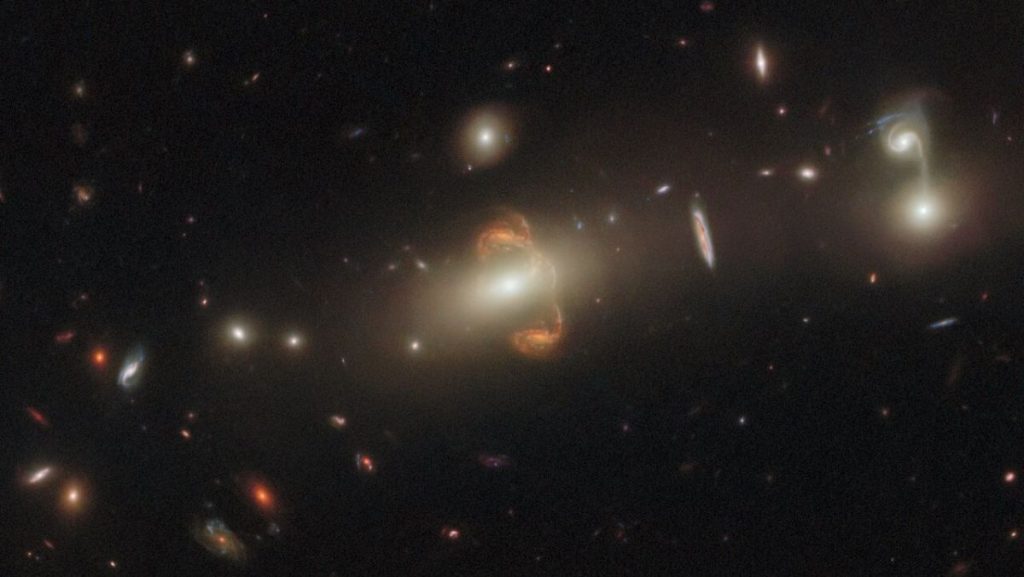NASA’s venerable space telescope is seeing double in a stunning new image of a distant galaxy.
The new image from the Hubble Space Telescope captures a galaxy named SGAS J143845+145407, located in the northern constellation Boötes — one of the largest constellations in the sky. The mirror image of the galaxy at the center of this new photo is the result of strong gravitational lensing, which is an astronomical phenomenon that can warp, magnify or even duplicate the appearance of distant galaxies.
“Gravitational lensing occurs when a massive celestial body — such as a galaxy cluster — causes a sufficient curvature of spacetime for the path of light around it to be visibly bent, as if by a lens,” according to a statement from the European Space Agency (ESA). “Appropriately, the body causing the light to curve is called a gravitational lens, and the distorted background object is referred to as being ‘lensed.'”
Related: The best Hubble Space Telescope images of all time!
At the center of the new Hubble image, the bright light emanating from SGAS J143845+145407 appears as an arc or ring around either side of the object that lies between the distant galaxy and the space telescope. The image also captures several other galaxies and celestial objects scattered across space.
Hubble is equipped with sensitive scientific instruments that allow it to capture faint and distant gravitational lenses that ground-based telescopes are not able to detect due to blurring caused by Earth’s atmosphere.
Gravitational lensing also allows astronomers to observe objects that would otherwise be too far away or too faint to be seen. The distortion caused by the foreground object acts as a natural magnifying glass, zooming in on more distant celestial objects. Hubble is able to capture the light from those more distant objects to determine their shape and internal structure, according to the statement from ESA.
The recent image of galaxy SGAS J143845+145407 was taken as part of a larger Hubble initiative to study galaxies of the early universe using gravitational lensing to examine the galaxies up close.
“The lensing reveals details of distant galaxies that would otherwise be unobtainable, and this allows astronomers to determine star formation in early galaxies,” ESA officials said in the statement. “This in turn gives scientists a better insight into how the overall evolution of galaxies has unfolded.”
Follow Samantha Mathewson @Sam_Ashley13. Follow us on Twitter @Spacedotcom and on Facebook.

